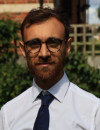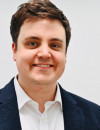Introduction
The first UK cases of COVID-19 were detected on 29th January. Within weeks the normal functioning of the National Health Service ground to an effective halt. By mid-March elective surgery had stopped, non-urgent hospital admissions were postponed and staff of all specialties and grades were assigned to new roles and working environments to deal with the anticipated surge of coronavirus patients. The initial focus was on creating capacity: identifying patients who could be safely discharged home in order to free up beds in acute hospitals, and ensuring that new patients were only admitted in an emergency. Specialist wards were converted to take patients with a variety of conditions.
Neurology trainees found themselves deployed in a variety of ways to meet the local need. Trainees in academia answered a personal or institutional call to rejoin the ‘front lines’, sometimes after several months or years out of routine clinical practice, and to a very different clinical environment – such as the emergency department or intensive care. Meanwhile, the risks of front-line working were palpable. With well over 100 NHS workers reported to have died of COVID-19 and countless others gravely ill, going to work became untenable for some due to risks to their health or that of their immediate family. For them work took on a different meaning, and working from home, as a doctor, became a new challenge and new opportunity.
In this article we report three very different experiences of neurology trainees in the UK: continuing with the provision of neurology care, redeployment to uncharted territory and working while shielding. Each of these endeavours brought new experiences, new challenges and new insights into the role of the physician, personal development and the potential future of neurology.
Neurology as never before
Srikirti Kodali
My experience of redeployment in Addenbrooke’s has been shared between inpatient neurosurgery, neurology and the acute medical take.
Being part of the medical take has been an eye opening experience, one that advocates a permanent role for neurology at the front door. I was kept busy with a filtered take list of headaches, seizures, visual loss, weakness, sensory loss and that of unusual presentations for which a neurologist is arguably the most suitable to provide the initial review. These presentations would constitute at least 10% of the medical take. Having only recently completed core medical training, I embraced the prospect of reviewing patients with systemic complaints as well. Infection control policy meant that aspects of bedside examination such as fundoscopy had to be omitted, and working around face masks to perform a cranial nerve examination was laborious.
My contribution however was not just limited to being an extra person to aid the medical take, there were other benefits too. Assessing patients at the front door to offer specialist input directly, reduced the number of encounters between each patient and multiple clinicians, which in turn frees up clinician time and reduces the burden on patients. It allowed the patients to have relevant investigations in A&E, avoided unnecessary investigations, and aided decision making within four hours. This in turn avoided admissions for specialist input, thereby limiting time patients spent in hospital. In addition, this process reduced the inpatient referral burden and acute neurology clinic bookings, thereby streamlining and simplifying our service. Redeployment of other specialities into the acute medical take also meant that patients requiring multidisciplinary input received this at the front door – a true luxury, which seemed to be patient-centred acute care at its best.
Redeployment of other specialities into the acute medical take also meant that patients requiring multidisciplinary input received this at the front door – a true luxury, which seemed to be patient-centred acute care at its best.
Powerful hospital information management systems were hugely beneficial during this pandemic. With a well-established and fully integrated electronic patient record, we were able to provide remote reviews on COVID-19 wards, home working for those staff at high risk and easier remote management of outpatient clinics.
Unusual times also meant an unusual pattern of disease presentation. At the start of lockdown we saw almost no cases of functional neurological disorder, but very sick people with encephalitis, myasthenia, rapidly progressing Guillain-Barré Syndrome continued to present. They were investigated quickly and we had capacity to start plasma exchange within 48 hours of admission. Inpatient management was beautifully efficient and incredibly satisfying. We had our share of COVID-19-related neurology including cases of opsoclonus myoclonus and mononeuritis multiplex. It was unfortunate that in an attempt to stay home and not burden the NHS, some patients presented too late with strokes and severe systemic illness to a point of no reversibility with treatment.
Two months into lockdown, the psychological effects of the national situation was reflected in the number of patients who presented with functional neurological disorders . We were also involved in the care of patients with an exacerbation of underlying psychiatric illness who were then attended to by our front-door liaison psychiatry service.
Redeployment to ward based neurosurgery gave the opportunity for reviewing a different perspective on neurological presentations, and brought the neurosciences community within the hospital closer together.
Front door neurology has become a permanent fixture.
As the infection rates fall, we continue to adapt our service and hope to use lessons learnt during the pandemic to better shape future services. Front door neurology has become a permanent fixture. We continue to manage outpatient services remotely with a long-overdue establishment of telemedicine and endeavour to support primary care through a 48-hour advice and guidance service. We have closer ties through shared experiences with our physician and neurosurgical colleagues which will lead to a more integrated medical community.
ICU family communications
Richard Rees
Having been in academia for 3 years, and coming towards the end of my research, I had hoped to spend March finishing data collection and then focus purely on analysis and writing up prior to the arrival of my third child. As the pandemic took hold, and my A&E locum shifts showed me the reality of COVID-19, it was clear that my plans were about to evaporate. My university made it very clear that any clinical academic who wanted to, was free to step back into a clinical role, and I knew that this was the path for me.
Given how many clinicians within the NHS were redeployed, it took a few days to clarify with the trust’s redeployment team where exactly I would be of most use. I was first asked to join a small team providing general medical support at Queen Square, as I was familiar with the institution, neurological aspects of care, and also had maintained general medical experience. Although geographically distinct from University College London Hospital (UCLH) and without an A&E entrance, there was an expectation (or fear) that the neurology wards may end up full of patients with COVID-19, regardless of other pathology. I continued this for a month before being re-redeployed to a novel team at UCLH Intensive Care Unit (ICU).
As the ICU doubled in size from 34 beds to supporting over 70 critically unwell people, the capacity for engaging with and supporting the patients’ families was quickly overwhelmed. I joined what will probably be the most multi-disciplinary team I will ever be part of: there were specialist nurses for organ donation (as that service was totally suspended) and redeployed consultants from paediatrics, fetal medicine, orthopaedics, urology, as well as haematology registrars and a team of academic dentists who provided logistic and coordination support.
At first glance I wondered if we were not much more than highly trained iPad stands in PPE.
Our role was to contact the families of the ICU patients, find out more about our patients as people, and facilitate video calls between patients and their families in lieu of in person visits. At first glance I wondered if we were not much more than highly trained iPad stands in PPE. However, I quickly realised that our role was much more crucial to the families as well as the patients. In this faceless world of healthcare, where physical and emotional contact was so limited, we brought uncovered faces to the bedside. We brought tears and laughter, song and prayer to the sterility of the ICU. After the end of what would be the last call that a mother had with her son in his 30s, she said “I just want to know that someone is holding his hand”. This crystalised for me the importance of touch. Touch is something we do as neurologists – the physical examination involves the laying on of hands, not just for data collection for the refinement of a differential diagnosis, but as a positive social construct that is not just an aspect of our profession but the sine qua non of what it is to be a physician.1,2 Margaret Atwood wrote “Touch comes before sight, before speech. It is the first language and the last, and it always tells the truth.” (The blind assassin, 2000).
I just want to know that someone is holding his hand.
While their relatives were in deep anaesthesia, we became a conduit of care and emotion from their families to them. As some patients recovered and regained their voices, I learned from them how this service was not just a source of hope and strength for those dutifully (but painfully) staying at home, but also for the patients as they fought against the muddle, confusion and delirium of the ICU and the existential challenge of their illness. The benefits were also shared by the ICU nurses and doctors, who not only had been stretched to the very limits of their capacity, but had done so without any of the usual interactions they had with the families, which suddenly became so precious and vital to their experiences too.
As I move back to full time clinical neurology in this brave new world, I will understand the necessity of telemedicine and know that deep connections can be made through the pixels and intermittent connection. However, I will know that the in-person, whole person interactions can never be replaced and I look forward to not just physically examining my patients but physically connecting with them.
Shielding and working from home
Mike Kemp
Since the end of March I have been working from home to shield my infant daughter. The results of this overnight change of circumstance have been profound and in other ways trivial. From having to adapt and almost re-learn to practice medicine remotely, to teaching myself to cut my own hair, and finally getting round to some of those long-procrastinated DIY jobs, these changes have been far reaching to all corners of my life, including to what time I get up in the morning and what I wear each day, as well as my eating habits and general routine.
There is a profound cognitive dissonance in having to stay at home to keep your family safe, and feeling you can’t be there to help colleagues on the wards. I have been very fortunate to be able to work clinically during this time and provide meaningful support to my colleagues. Initially, a significant part of my workload while working from home was stratifying the risk of our neurology outpatients according to the ABN guidelines to facilitate the addition of patients with neurological disease to the Shielded Patient List. This was a large piece of work with a huge time burden on clinicians, which I was able to contribute to remotely, easing pressure on colleagues still working face-to-face. For much of this time, in addition to continuing all of my regular clinics remotely, I have been able to provide additional capacity and also cross-cover clinics for colleagues who had to perform other duties or were even redeployed.
I’ve been very fortunate to be able to also contribute to some academic work from home, as well as to my roles on the BMA Junior Doctors Committee and my Lead Employer Local Negotiating Committee, addressing the issues faced by doctors working in all environments and circumstances.
Telephone clinics have been an eye opener to the world of telemedicine, to which I was previously a skeptic, but I’m now a convert.
Telephone clinics have been an eye opener to the world of telemedicine, to which I was previously a skeptic, but I’m now a convert. There are huge benefits to telemedicine for routine follow up or screening of some new referrals to get appropriate investigations quickly. However there are also some complex limitations, including the selection of appropriate patients, which may only be overcome with detailed outpatient clinical coding. For many patients living with neurological disease being able to fit their care into their normal working day without disruption, or needing to take leave, is a great asset. There are of course patients where communication barriers limit the feasibility and appropriateness of telemedicine. Telemedicine requires adapting skills, for those of us who use diagrams to explain concepts to patients, and due to lack of body language cues from both doctor and patient, not to mention the inability to examine; it does however re-enforce the old adage that the lion’s share of the diagnosis is in the history.
Adapting to teleconferencing and videoconferencing for departmental meetings, MDTs, teaching, clinical supervision, external meetings… everything, has also been an eye-opener. I had always preferred to meet face-to-face to get a better read of people, especially when meetings were a mixture of people present in person and others joining remotely, whereas everyone joining the same way has made meetings via these technologies more successful.
I’ve also found myself engaging much more with web-based learning resources. Having long been a fan of the paper journal, I am now quite happy to read things online for convenience (and in the absence of access to a library). I am also finding more time for this now without my usual commute.
I am not sure the way I practice medicine and the way I work and learn will ever go back to the way it was.
I am not sure the way I practice medicine and the way I work and learn will ever go back to the way it was, but I am also certain that in part that is a good thing.
Conclusion
The life of a trainee in the UK can often feel like one of constant upheaval and change. As a nation (or indeed species) we have undergone one of the most challenging periods in recent history. Our resilience and adaptability have been pushed to their limits and as a cohort of physicians and physicians-in-training, we have proven our ability not just to adapt but to thrive and find ways of helping our patients and colleagues. As our working lives start to resemble normality (whatever that word means), we bring back incredible experiences individually and collectively. With those experiences come new ways to look at old problems, and an understanding that even monolithic organisations can change and adapt. As the medical leaders of the future, we should have the courage and ability to make sure that the new normal builds on our learning from the pandemic, and is the best it can be for our patients and colleagues; a more sustainable and effective NHS, and not just a reversion to how things were before.
References
- Horton, R., 2019. Offline: Touch-the first language. Lancet (London, England), 394(10206), p.1310. https://doi.org/10.1016/S0140-6736(19)32280-9
- Verghese, A. et al., 2011. The bedside evaluation: ritual and reason. Annals of internal medicine, 155(8), pp.550–553. https://doi.org/10.7326/0003-4819-155-8-201110180-00013


